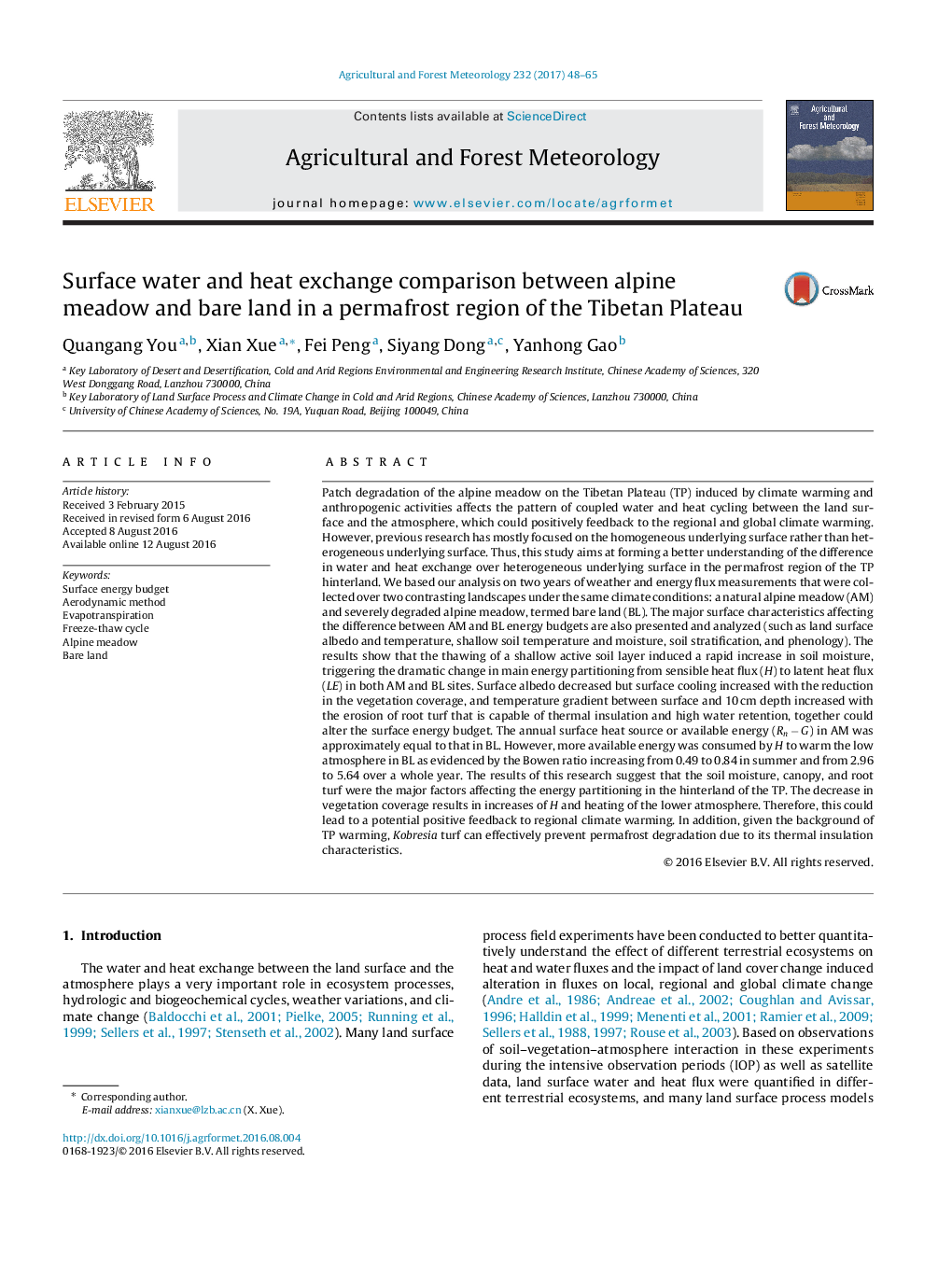| کد مقاله | کد نشریه | سال انتشار | مقاله انگلیسی | نسخه تمام متن |
|---|---|---|---|---|
| 6458061 | 1420865 | 2017 | 18 صفحه PDF | دانلود رایگان |
- Shallow soil thawing leads to dominance of latent heat flux in energy partitioning.
- Denuding of Kobresia turf will decrease surface albedo but cool land surface.
- Alpine meadow degr adation positively feedbacks to the regional climate warming.
Patch degradation of the alpine meadow on the Tibetan Plateau (TP) induced by climate warming and anthropogenic activities affects the pattern of coupled water and heat cycling between the land surface and the atmosphere, which could positively feedback to the regional and global climate warming. However, previous research has mostly focused on the homogeneous underlying surface rather than heterogeneous underlying surface. Thus, this study aims at forming a better understanding of the difference in water and heat exchange over heterogeneous underlying surface in the permafrost region of the TP hinterland. We based our analysis on two years of weather and energy flux measurements that were collected over two contrasting landscapes under the same climate conditions: a natural alpine meadow (AM) and severely degraded alpine meadow, termed bare land (BL). The major surface characteristics affecting the difference between AM and BL energy budgets are also presented and analyzed (such as land surface albedo and temperature, shallow soil temperature and moisture, soil stratification, and phenology). The results show that the thawing of a shallow active soil layer induced a rapid increase in soil moisture, triggering the dramatic change in main energy partitioning from sensible heat flux (H) to latent heat flux (LE) in both AM and BL sites. Surface albedo decreased but surface cooling increased with the reduction in the vegetation coverage, and temperature gradient between surface and 10 cm depth increased with the erosion of root turf that is capable of thermal insulation and high water retention, together could alter the surface energy budget. The annual surface heat source or available energy (Rn â G) in AM was approximately equal to that in BL. However, more available energy was consumed by H to warm the low atmosphere in BL as evidenced by the Bowen ratio increasing from 0.49 to 0.84 in summer and from 2.96 to 5.64 over a whole year. The results of this research suggest that the soil moisture, canopy, and root turf were the major factors affecting the energy partitioning in the hinterland of the TP. The decrease in vegetation coverage results in increases of H and heating of the lower atmosphere. Therefore, this could lead to a potential positive feedback to regional climate warming. In addition, given the background of TP warming, Kobresia turf can effectively prevent permafrost degradation due to its thermal insulation characteristics.
Journal: Agricultural and Forest Meteorology - Volume 232, 15 January 2017, Pages 48-65
